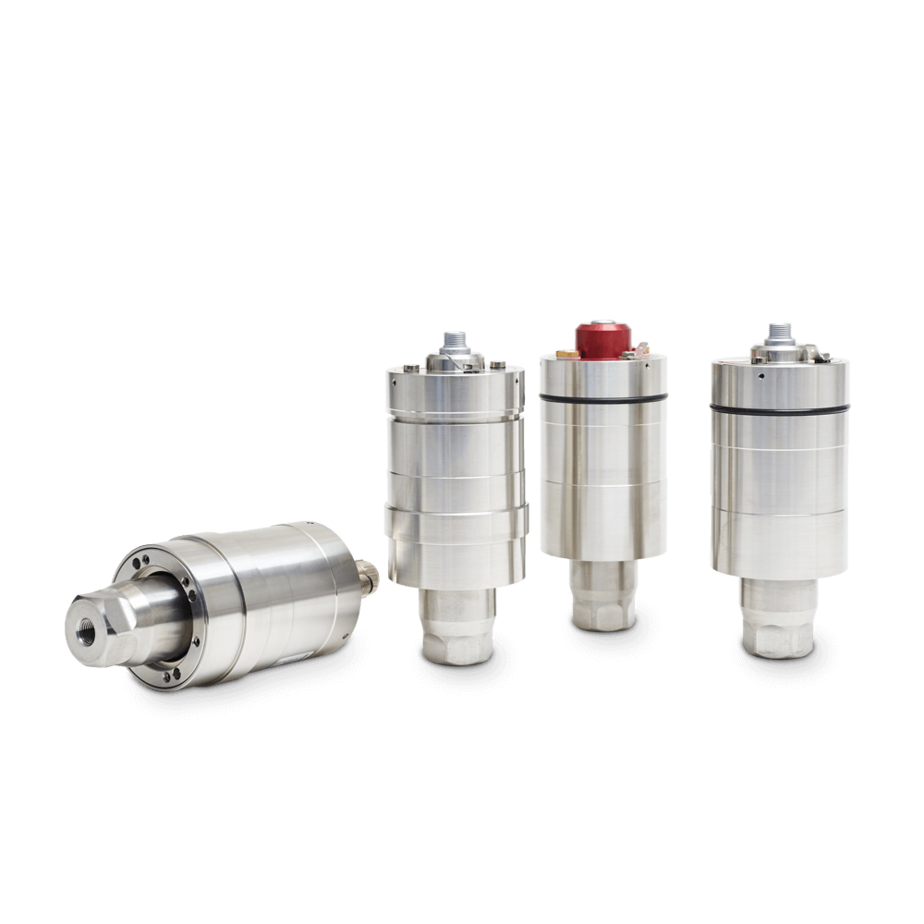Converters for ultrasonic welding
The ultrasonic converter converts high frequency electrical vibrations into a mechanical longitudinal vibration with a constant output amplitude.
Depending on production environment conditions, ultrasonic converters are available with protection ratings of IP50, IP65, and IP67. For rotating operation, a series of ultrasonic converters with integrated HF connection for rotary couplers has been developed. What all ultrasonic converters have in common is their central assembly with solid piezoceramic four-disk technology. The rigid decoupling principle allows for axial and transverse forces. Special manufacturing processes ensure extremely long service life at constant output amplitude.
How does an ultrasonic converter work?
The energy required for ultrasonic welding is input by means of mechanical vibrations. For this purpose, the ultrasonic generator generates electrical oscillations in the 20 or 35 kHz range from the 50 Hz AC mains current. Via a converter, the electrical oscillations are converted into mechanical oscillations in the same frequency.
These mechanical longitudinal oscillations are transmitted to the sonotrode after the converter.
